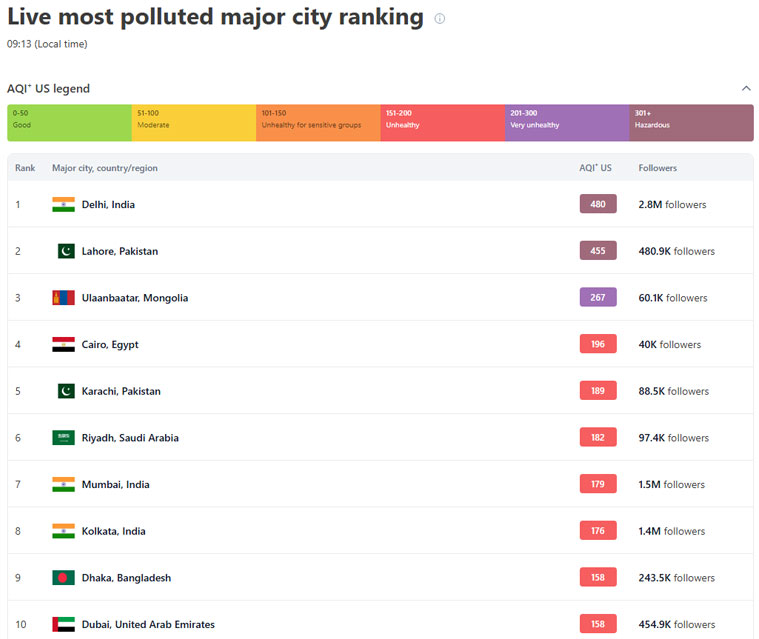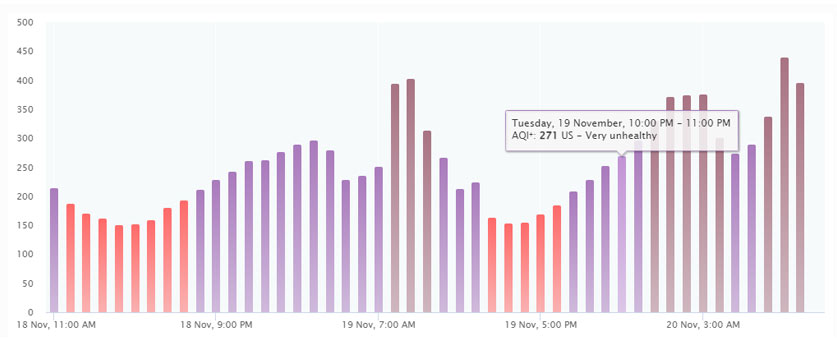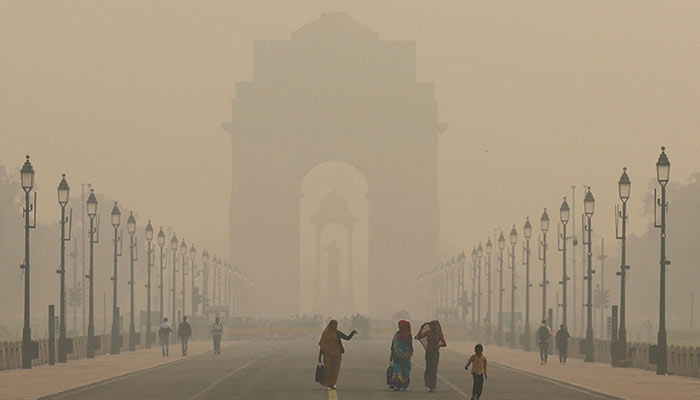- Students instructed to ensure mask-wearing at schools.
- Slight improvement witnessed in Lahore’s smog level in past days.
- Breathing toxic air poses catastrophic health risks to humans.
Residents in Lahore woke up to another day of poor air quality on Wednesday, as a layer of dense fog shrouded most of the region, making the megapolis the second-most polluted city in the world.
Pakistan, especially Punjab, battles air pollution every winter as cold, heavy air traps dust, emissions, and smoke from farm fires.
However, a slight improvement was witnessed in the smog level during the past few days, which prompted authorities in the worst-affected cities, Lahore and Multan, to reopen schools today after more than a week of closure owing to hazardous pollution levels.

Students would have to wear face masks and outdoor sports will remain suspended at all educational institutes.
The air quality index (AQI) was recorded at 455 in the provincial capital around 9:15 this morning, registering the second-worst air quality in the world while the (PM2.5) pollutants in the air amounted to 296, which is 59.2 times higher than the World Health Organisation’s (WHO) annual air quality guideline value.

Lahore’s air quality index (AQI) fell to 271 late on Tuesday, which Swedish group IQAir categorises as unhealthy, after crossing 1,000 in in past weeks.
Meanwhile, Multan’s AQI was recorded at 207 around 10am.
In contrast, air quality remained severe in New Delhi, making it the world’s most polluted city with air quality at a “hazardous” 480 on Swiss group IQAir’s global pollution rankings.

The 24-hour AQI reading in the Indian capital was at 488 on a scale of 500 around 10am, as per India’s Central Pollution Control Board (CPCB).
CPCB defines an AQI reading of 0-50 as “good” and above 401 as “severe”, which it says is a risk to healthy people and “seriously impacts” those with existing diseases.
Meanwhile, IQAir ranked Karachi as the fifth most polluted city with air quality at an “unhealthy” 189.
Breathing toxic air has catastrophic health consequences, with the WHO warning that strokes, heart disease, lung cancer and respiratory diseases can be triggered by prolonged exposure.
According to a University of Chicago study, high levels of pollution have already reduced life expectancy in Lahore, the capital of Punjab with its 14 million inhabitants, by 7.5 years.
Experts believe that modernising car fleets, reviewing farming methods and making the transition to renewable energies are the keys to overcoming the smog that paralyses millions of Pakistanis and Indians every year.
— Additional input from Reuters and AFP


